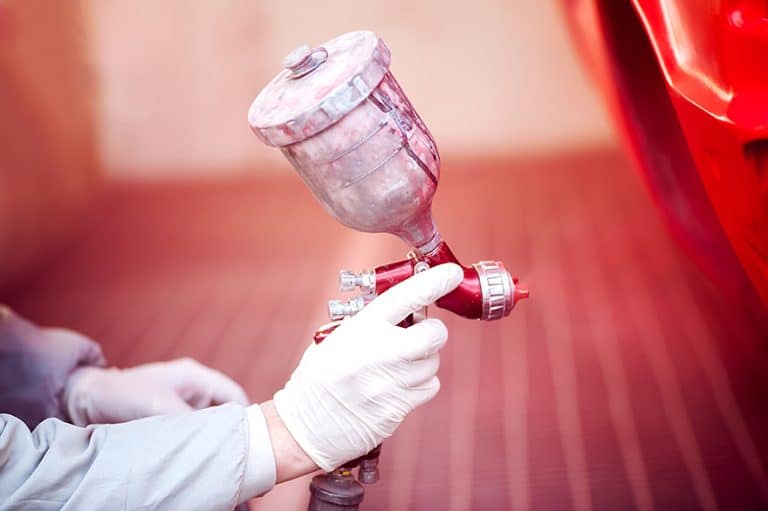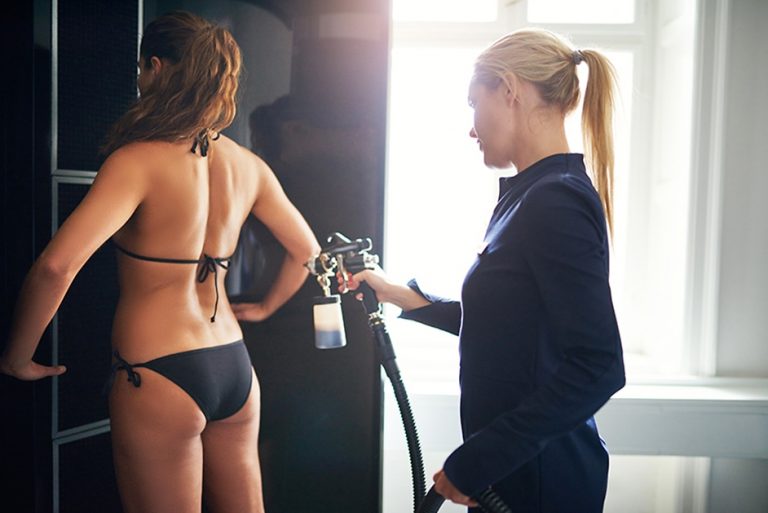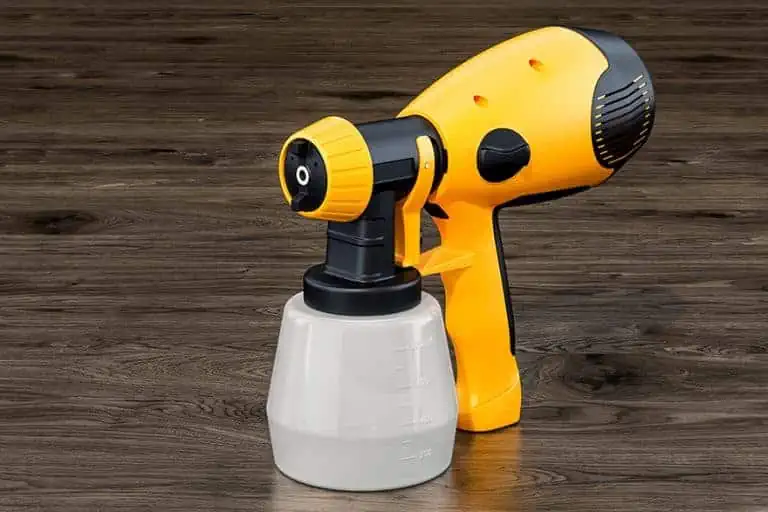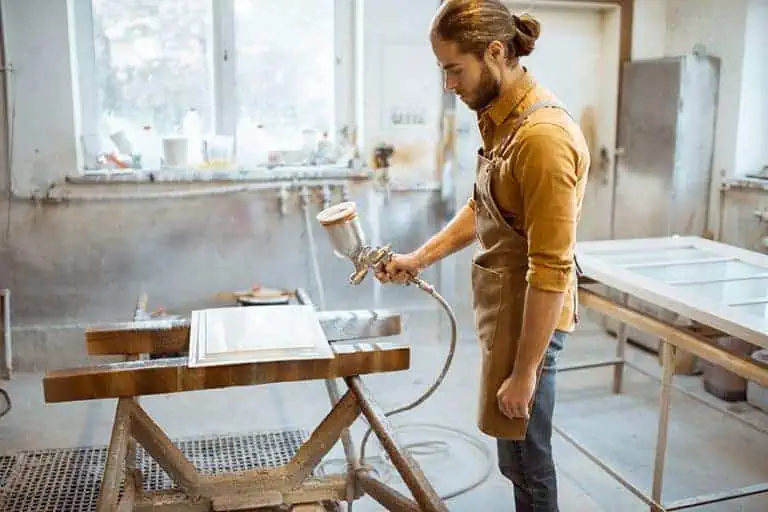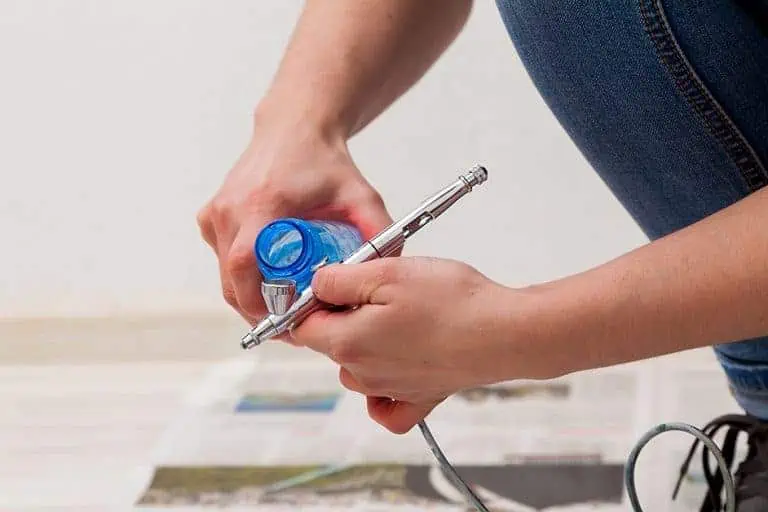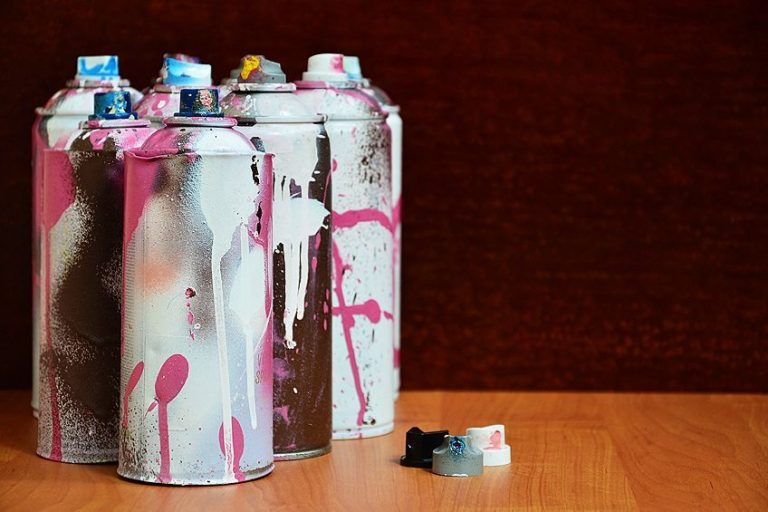Thinning Acrylic Paint for Airbrush – Recipes and Tutorial
This post may contain affiliate links. We may earn a small commission from purchases made through them, at no additional cost to you.
Airbrushing acrylic paints can be used for many purposes because it comes in opaque as well as transparent options. The acrylic paint is safe as it is water-based. Other benefits of using acrylic paints include no odor, no fumes and you can easily use the paint indoors even if the space you are using has poor ventilation. The acrylic paints offer artists a way to create different layers and textures to their work, adding more freedom to the creative process. When it comes to thinning acrylic paints, it is simple enough if you follow some basic steps.
Table of Contents
- 1 Thinning your Airbrush Paint
- 2 Can thinning Ratios be affected?
- 3 What happens if you do not thin your Airbrush Paint?
- 4 Thinning Airbrushing Acrylic Paints
- 5 How to use Airbrushing Acrylic Paints
- 6 Using a Metallic Acrylic Paint for Airbrushing
- 7 Caution when thinning Airbrushing Acrylic Paints
- 8 Most Popular Acrylic Airbrush Paint Thinners
- 9 Do it yourself Airbrush Thinner – Recipes
- 10 Can you use Water to thin Acrylic Paint for Airbrushing?
- 11 Adding an Airbrush Acrylic Medium
- 12 How to thin a solvent-based Paint
- 13 Making your own Airbrush Paint Thinner or Cleaner – Q&A
Thinning your Airbrush Paint
The product label usually states airbrush paint, but this doesn’t mean you can use the paint straight away on a project. When deciding on the use for the paint, you may have to consider something like thinning acrylic paint for airbrush. If you don’t thin the paint, you might be sitting around more than painting, trying to figure out why it isn’t working properly.
Thinning paint before letting it go through the airbrush can help to create a finer and more superior spray pattern. Most airbrush paint, when used from the bottle, can be slightly thick. This also depends on the type or brand of airbrush paint, as they are not all the same.
There are, therefore, two main factors you have to take into consideration when thinning acrylic paint for airbrush:
- The brand of airbrush paint you are using
- What you plan to do with the paint
In general, you will find that thinning your acrylic paint will help to improve the way the airbrush works.
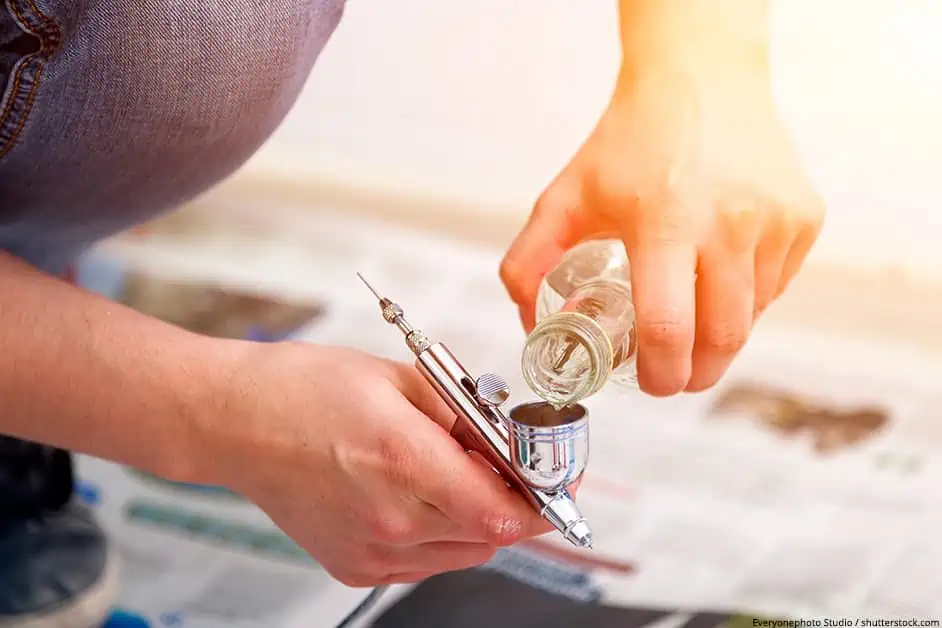
Can thinning Ratios be affected?
You can purchase a variety of colors from Opaque to Candy, Pearl and Transparent. The adding of these color finish products can affect the paint viscosity. The amount of reducer that thins the paint will then have to be adjusted.
- The Opaque Colors: These paints do not allow any light through
- Transparent Colors: Lets light through the paint
The Opaque paints are slightly thicker because it needs to provide more of a solid color. While the Transparent paints are thinner and will, therefore, require less reducer than the Opaque paints. When considering what color finish to use, the Transparent colors will most likely be the ones that do not require any thinning.
What happens if you do not thin your Airbrush Paint?
You might be able to get away with using airbrush paint straight from the bottle if you use a certain brand and color. Although, you will most probably have to use a higher PSI to get a proper spray pattern.
Using airbrush paint that might be thicker can cause the following problems:
- The paint can clog the airbrush
- Spray pattern will be inconsistent
- The airbrush itself can be overworked because the PSI needs to be higher for thicker paint.
Thinning Airbrushing Acrylic Paints
How to thin acrylic paint for airbrush? Generally, you use some distilled water, or you can purchase airbrush reducers. The consistency you are looking for is something like that of milk. Some factors can affect consistency, such as
- The type of airbrush
- Needle size
- Liquid nozzle size
- Air Pressure used
Thinning paint for airbrush and getting the right consistency depends on the nozzle size, as mentioned. You will find a 0.5 mm liquid nozzle sprays thicker than that of a 0.2 mm nozzle, providing the air pressure is correct.

By reducing the colors too much, you can cause the colors to not stick as they should. The products you use should have datasheets available. Make sure to check these sheets out before using. The trick is to discover how much reduction is necessary for your specific project. This might entail a bit of experimentation.
Thinner versus Extender
The color extenders, made by paint manufacturers, do not thin the paint but make it transparent. Read further to discover ways on how to thin acrylic paint for airbrush.
How to use Airbrushing Acrylic Paints
Step 1
When buying an acrylic paint, simply look for paint that is specifically made for airbrushing. The products available have a thinner included, or you should be able to find a thinner nearby where the products are sold. The airbrush acrylic product packages have instructions for you to follow and this should provide the results you are looking for.
Step 2
Can you use water to thin acrylic paint for airbrushing? Yes, simply mix a 1:1 ratio of water and acrylic paint. Mix well by adding the mixture to a container with a lid and shake vigorously for a minute or two. You can also place the mixture in a measuring jug and mix with a mini whisk. The whisk should be available in the home section of stores.
Step 3
For thinning acrylic craft paint for airbrushing, you can use rubbing alcohol or try some Windex. The rubbing alcohol should easily be found in most crafts stores and Walmart. This method of thinning acrylic craft paint for airbrushing is very effective and affordable, as it only costs about 77 cents a bottle. Use a 1:1 ratio and mix your rubbing alcohol and paint, then spray with the airbrush.
Using a Metallic Acrylic Paint for Airbrushing
When using Metallic Acrylic Paint for airbrushing, you can thin the paint as described above. How to thin paint for airbrush will depend on the metallic flake size. The cheaper craft acrylic paints usually consist of a small flake, which makes it more effective. Remember to shake the paint bottle now and again, as the pigments tend to settle to the bottom.
Caution when thinning Airbrushing Acrylic Paints
The acrylic paints tend to clog the airbrush at the nozzle, which can land up producing a splattering effect. To avoid this, clean the nozzle every so often with water by flushing some though the airbrush. To thin white paint, you can simply use water or rubbing alcohol.
When using rubbing alcohol:
- When using the alcohol in the paint, it will form fumes and there will be an odor
- Make sure to work in a well-ventilated space when using any alcohol-based products
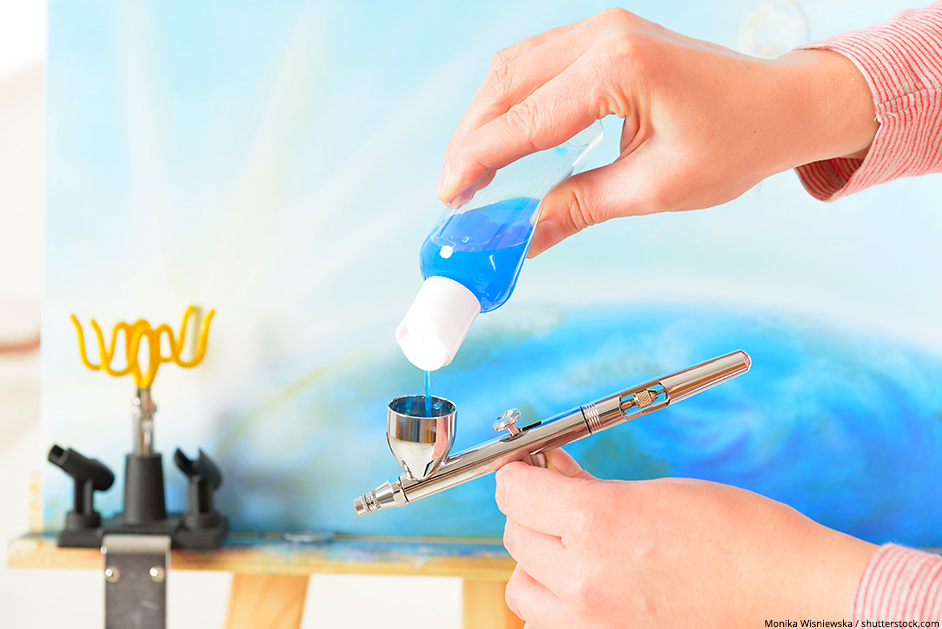
Most Popular Acrylic Airbrush Paint Thinners
Recommended Paint Thinner
Most of the paint manufacturers create their paint thinners, which work perfectly with their specific brand of paint. To acquire the results, you want with your acrylic paint, it would be best to buy the thinner form the company you bought the paint from. You should then have no problems when using the paint, provided you follow the instructions when using the thinner and paint.
The manufacturer of the paint should have a datasheet available describing the thinner you will need. Here are a few recommendations:
- Ideal for Model Air and Liquid Acrylic Paints
- Dilutes without loss of color adhesion, durability or consistency
- 200 ml plastic bottle
- A premium reducer for thinning water-based pain
- Allows for decreased drying and curing times as well as improved flow with less tip-dry
- Water-based. Proudly made in the USA
Do it yourself Airbrush Thinner – Recipes
Buying acrylic paint thinners can get expensive, but what if you can make your own? This is cheaper, and it is easy to do. You can find many recipes online including solvent-based ones, but here are a few recipes that are ideally suited to water-based airbrush thinners.
Recipe 1
You will need:
- 75% Distilled Water
- 25% Fantastik all-purpose cleaner
Recipe 2
You will need:
- 2/3 Distilled Water
- 1/3 99% Isopropyl Alcohol
- 1 drop Glycerine for every 50 ml of the mixture
Recipe 3
You will need:
- 4 Cups Distilled Water
- 1 Cup Fantastik all-purpose cleaner
- 1 Cup 99% Isopropyl Alcohol
- 5 drops Glycerine
Can you use Water to thin Acrylic Paint for Airbrushing?
Distilled water is great to use for thinning your acrylic paints. Although water is okay but using the shop bought reducer is a lot more effective in producing better results. The homemade recipes are also better than water alone.
The reason for this is, there need to be alternative ingredients which help to increase the fluidity of the paint. The dry time of the paint is also helped along by the added ingredients, which won’t happen if you only use water. Water by itself can do the job if you find you can’t afford the shop thinners. Make sure it is distilled water, as tap water contains impurities and can cause a problem with the paint.

Adding an Airbrush Acrylic Medium
The airbrush acrylic medium is perfect to help thin out your acrylic paint and can be used alone, or it can be added along with the ingredients mentioned above. The consistency of acrylic medium is usually thinner than the acrylic paint and won’t cause the paint to breakdown.
Sometimes, the store-bought thinner or water added alone can land up under-binding the paint. This means the paint has become too thin and it cannot hold all the particles together, it breaks down the paint mixture. The result is paint that doesn’t stick properly to surfaces. The paint is too easily wiped away and once dry, begins to flake off.
You can help prevent this by including acrylic medium into your paint mixture after the thinner or reducer has been added. The medium helps to prevent any under-bonding. We recommend the following airbrush acrylic mediums:
- Golden Airbrush Medium – you can purchase this product on Amazon
- Liquitex Professional Airbrush Medium – you can purchase this product on Amazon
How to thin a solvent-based Paint
Solvent-based paints or oil-based paints should use the thinner or reducer that is recommended for your specific paint. In this case, there is too much of a risk if you mix different kinds of thinner or chemicals.
There are, however, a few alternatives available, which depends on what oil-based paint you are using. Unfortunately, there are numerous types of paints available, which makes it a bit difficult to pinpoint what thinner or exact chemical you should be using. So, it is up to you to research the specific oil-based paint you are using before you use any alternative such as the ones provided below.
Understand that you are working with chemicals when it comes to solvents. Because of this, there are some hazards involved. If you don’t follow instructions, it could cause harm to your health and also affect the paint finish.
You can find a complete list of paint ingredients in the Safety Data Sheet (SDS) or Technical Data Sheet (TDS). You should be able to easily look this up on the internet.
Making your own Airbrush Paint Thinner or Cleaner – Q&A
Airbrush Thinner and Paint Thinner, are they the same?
The airbrush thinner is to help thin out your airbrush acrylic paint, while paint extenders made by paint manufacturers only make the paint more transparent and not thinner. You can add an acrylic medium or flow improver, which helps increase the flow and also keeps the tip from drying.
Can you use the Airbrush Cleaner as a Thinner?
Yes, the Vallejo airbrush cleaner is a good option as a cleaner and a thinner. When using these products, make sure to wear an airbrush mask and work in a well-ventilated space.
In 2005, Charlene completed her wellness degrees in therapeutic aromatherapy and reflexology at the International School of Reflexology and Meridian Therapy. She worked for a company offering corporate wellness programs for several years before opening her own therapy practice. In 2015, she was asked by a digital marketer friend to join her company as a content creator, and it was here that she discovered her enthusiasm for writing. Since entering the world of content creation, she has gained a lot of experience over the years writing about various topics such as beauty, health, wellness, travel, crafting, and much more. Due to various circumstances, she had to give up her therapy practice and now works as a freelance writer. Since she is a very creative person and as a balance to writing likes to be active in various areas of art and crafts, the activity at acrylgiessen.com is perfect for her to contribute their knowledge and experience in various creative topics.
Learn more about Charlene Lewis and about us.



